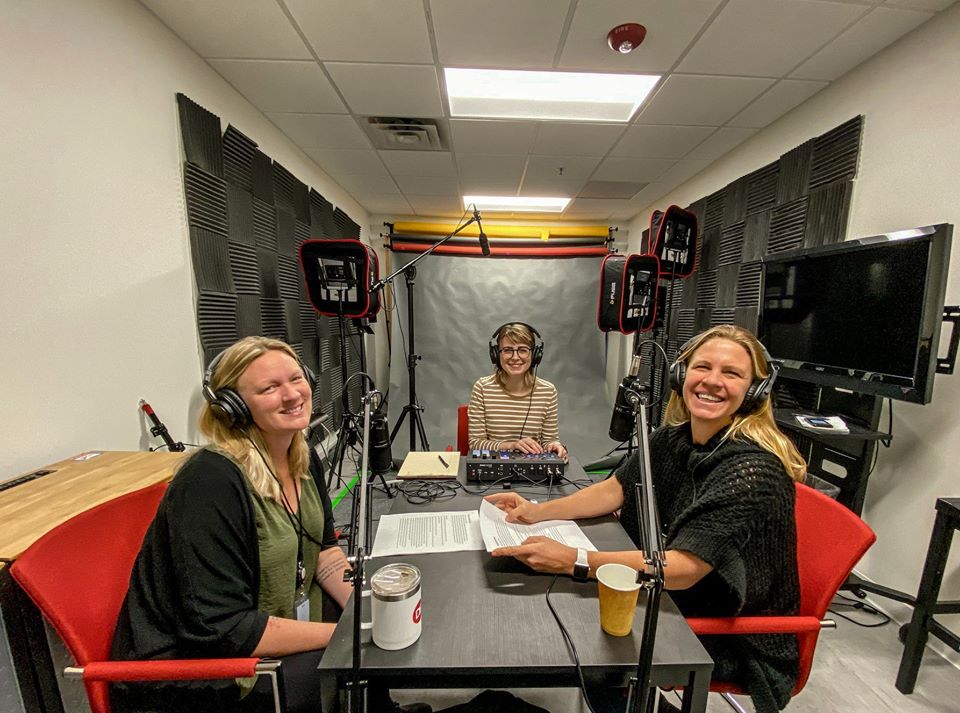With the unemployment rate for individuals with disabilities almost double that of the unemployment rate for individuals without a disability, dedicated hiring initiatives have become a focus for employers of all size and federal contractor status. Of course, accessibility is the first step–if your career site isn’t accessible, how can candidates with disabilities apply? A few weeks ago we sat down with DirectEmployers’ VP of Learning & Development, Jennifer Polcer, and Recruit Rooster, Account Executive, Ruth Toombs, for a discussion on the tips and takeaways for creating an attractive career site that is OFCCP compliant and accessible to all. Take a look at the highlights and be sure to listen to the full conversation via the DE Talk podcast!

Ruth Toombs and Jennifer Polcer recording the DE Talk podcast with Recruit Rooster’s Jordan Hartman running sound control.
Jennifer Polcer:
So, you’re up. What exactly is career site accessibility?
Ruth Toombs:
All right, so we get to do the long, techie answer. A website, or a career site in this case, strives to ensure that there are no barriers preventing users from having equal access to the website’s information and functionality.
Essentially, sites that are designed with accessibility in mind, they’re going to be compatible with disability-enabled software like screen readers and enabled audio devices, and it will allow those users to continue the online navigation process with reduced obstacles. So short answer, everybody can use it. That’s the goal.
We’ve always created our career site technology solutions with accessibility in mind. However, this year Recruit Rooster launched accessibility solutions for career sites. And I’ve got to say it has been really eye-opening experience. Some of the frustrations and barriers to employment for somebody, let’s say that doesn’t have a disability, so they don’t have a link working properly or there’s an expired job. Whereas, somebody with a disability utilizing the specialized software, a career site might not have the proper back-end development for them to even be able to access the jobs, let alone apply for any of the positions. And with the job search and application process, I mean, essentially, it’s all entirely online now. So people with disabilities need to be able to use these technologies as easily as other applicants.
Jennifer Polcer:
Right, and I’ve kind of pillared what I liked to call the four major components to OFCCP compliant career site. So, we’ve got one through four. The first one is the required notices. The second one would be your accurate equal employment opportunity tagline. Then we’ve got an affirmative action policy statement and AAP availability. AAP meaning your affirmative action program. And then finally, what I consider to be the most important from again, a basic humanity standpoint, is number four, your accommodation procedures.
Ruth Toombs:
Oh, absolutely. So I mean our entire team here has spent many hours undergoing training and additional education. We want to make sure that we’re experts in this realm. We really wanted to understand the limitations that individuals with disabilities face so we can really properly convey to our clients how to improve the processes and procedures and really help lower the unemployment rate for individuals with disabilities.
Jennifer Polcer:
Right? But like I mentioned earlier, what employers need to realize is that their career sites are now like a virtual HR office. So anything that an applicant should be able to see needs to be there because they’re no longer walking into your office in most cases.
A lot of companies have embraced this concept, and as you know, Ruth, in your space, have worked really hard to make some outstanding career landing pages very informational and creative. However, in all of this turn to moving to the creative side we’ve lost a lot of the legal notices, in many case, people…it just kind of fell off the radar that that was something they need to do.
Ruth Toombs:
At the end of the day, it is so much more than providing simple digital access. It’s really humanizing that experience.
Jennifer Polcer:
Exactly, exactly. You need to have your career site lined up with these four major components, work on getting the accommodation, the training for your team if you don’t have that in set place already. But this is the stuff that I’m super excited about.
Ruth Toombs:
Absolutely. I mean, I hear you, and I know that we both have family members with disabilities so this really hits home. My mom was a preschool teacher for many, many years, and due to an injury became disabled. And within a six month window she went from being able bodied, having this full time job she was passionate about to literally, unfortunately, living off the system.
So, it was really impactful. And during all of our research and training, we really dug into the stats and information to discover that approximately one in five people in the United States have a disability, whether it’s visible or it’s invisible, something we have to take into account as well. That’s actually 65 million people. And of course, as the baby boomer generation continues to age, that number is only going to increase.
To hear these experts dig further into the “four pillars” of an accessible career site, take a few minutes to listen to the full episode, and be sure to subscribe to be notified of new episodes of DE Talk via email or via SMS message by texting DETALK to 55678. Want to chat with an expert about the accessibility of your career site? Request a demo with a Recruit Rooster Account Executive to learn more!
Stay tuned for next month’s episode as our OFCCP compliance experts John C. Fox, Candee Chambers, and Jennifer Polcer gather to discuss what’s to come in employment law in 2020!
